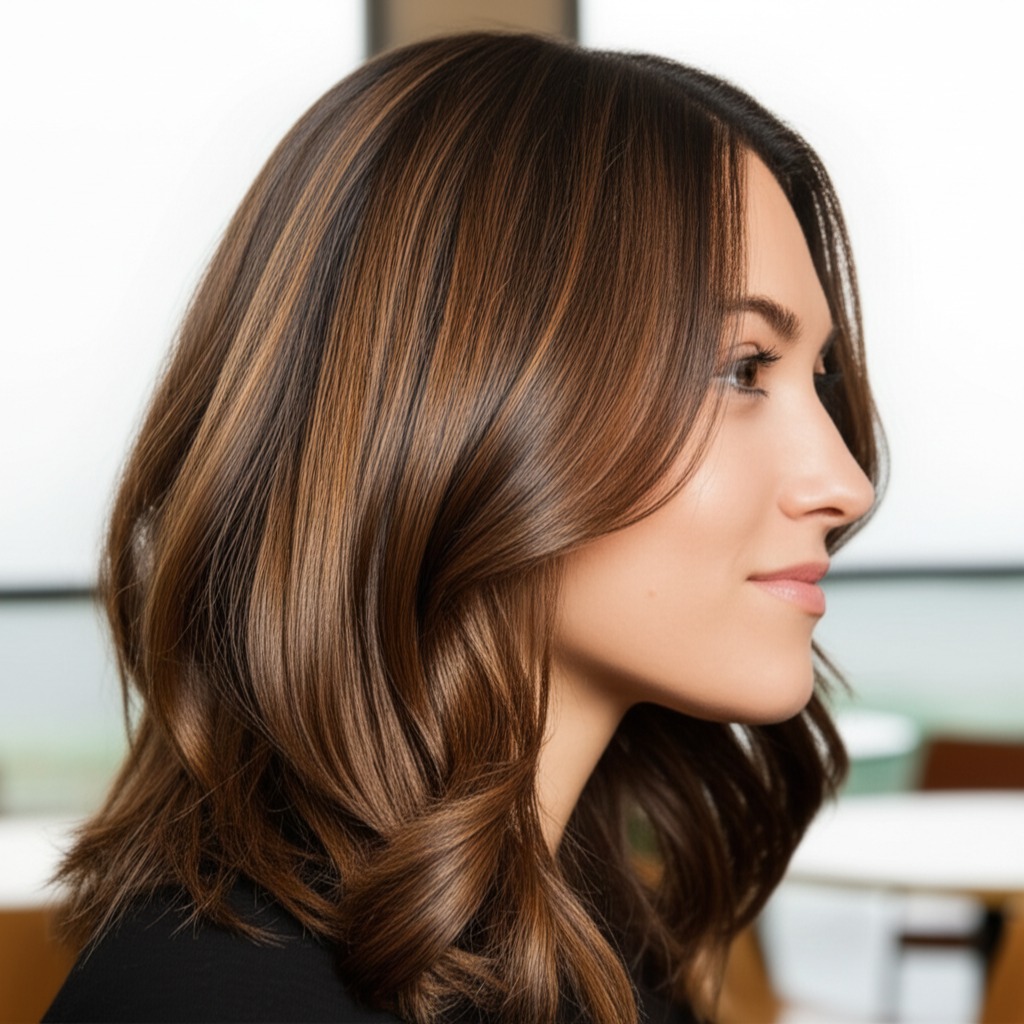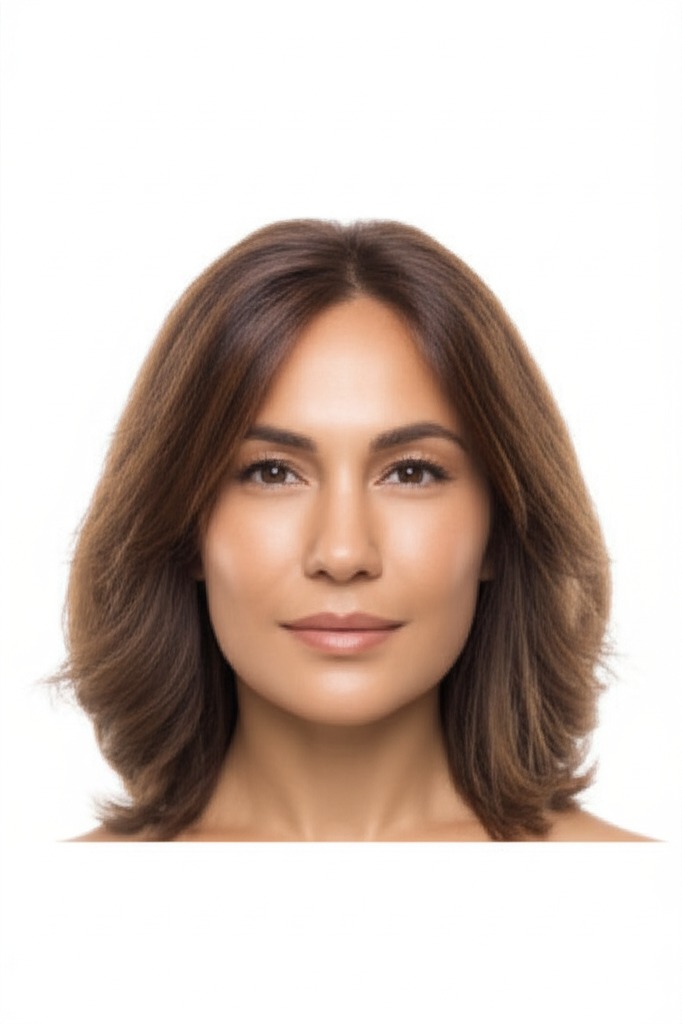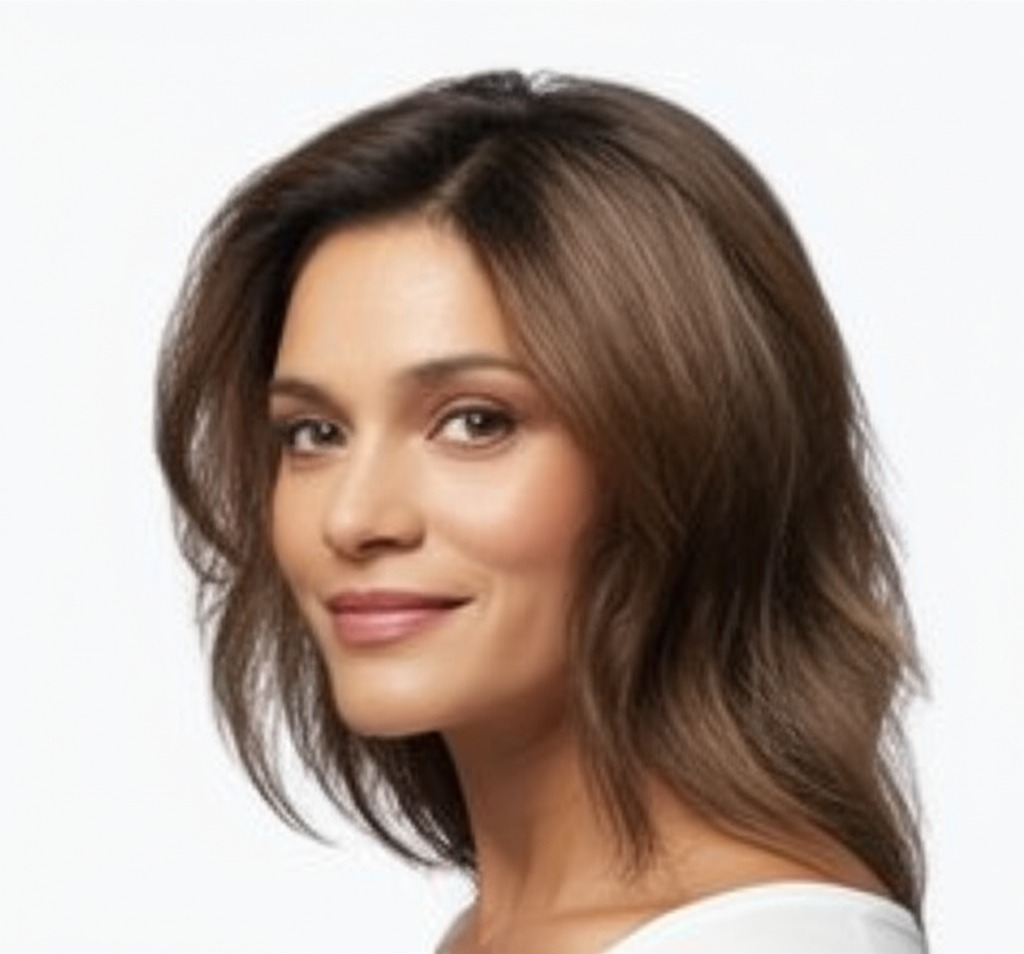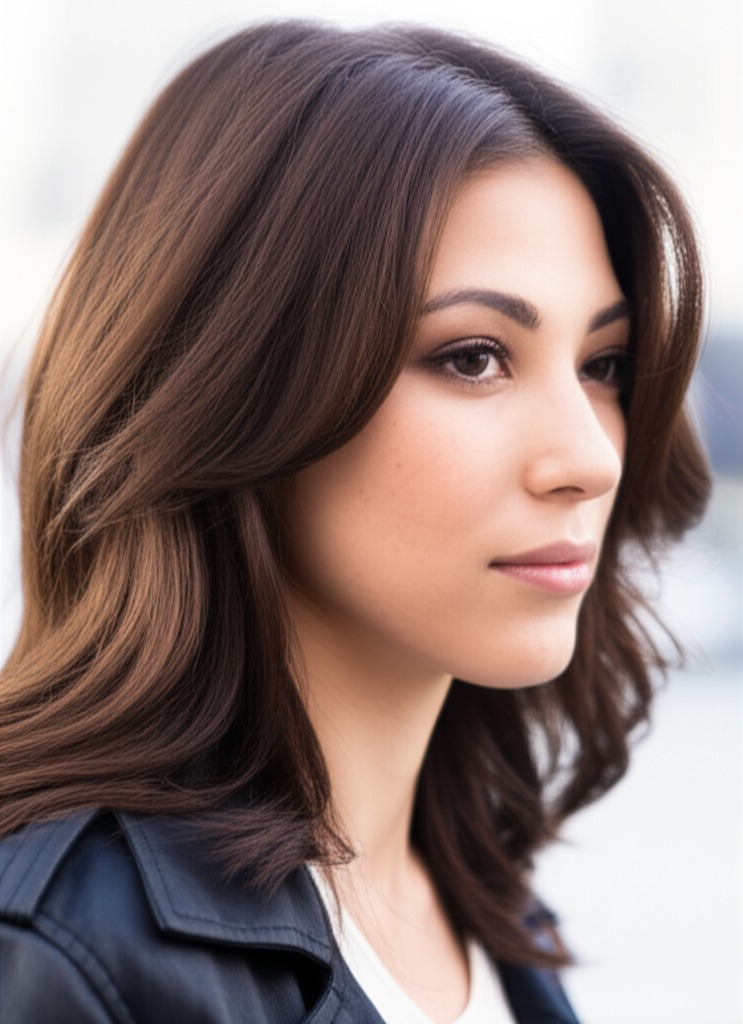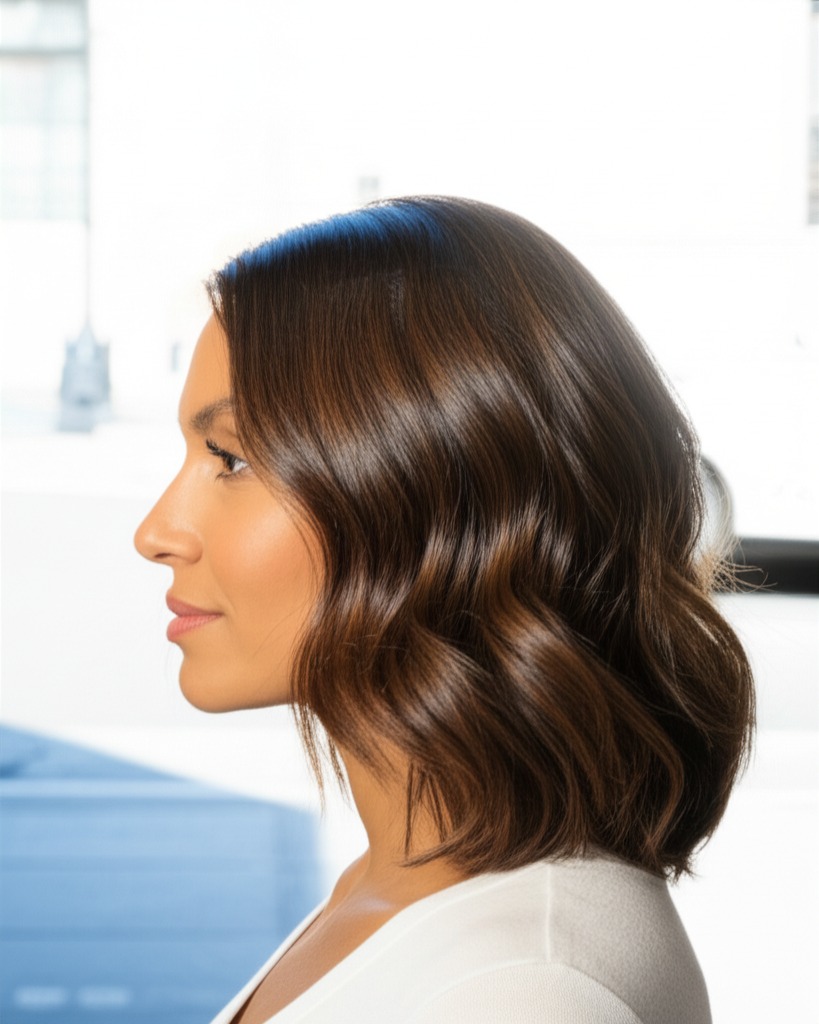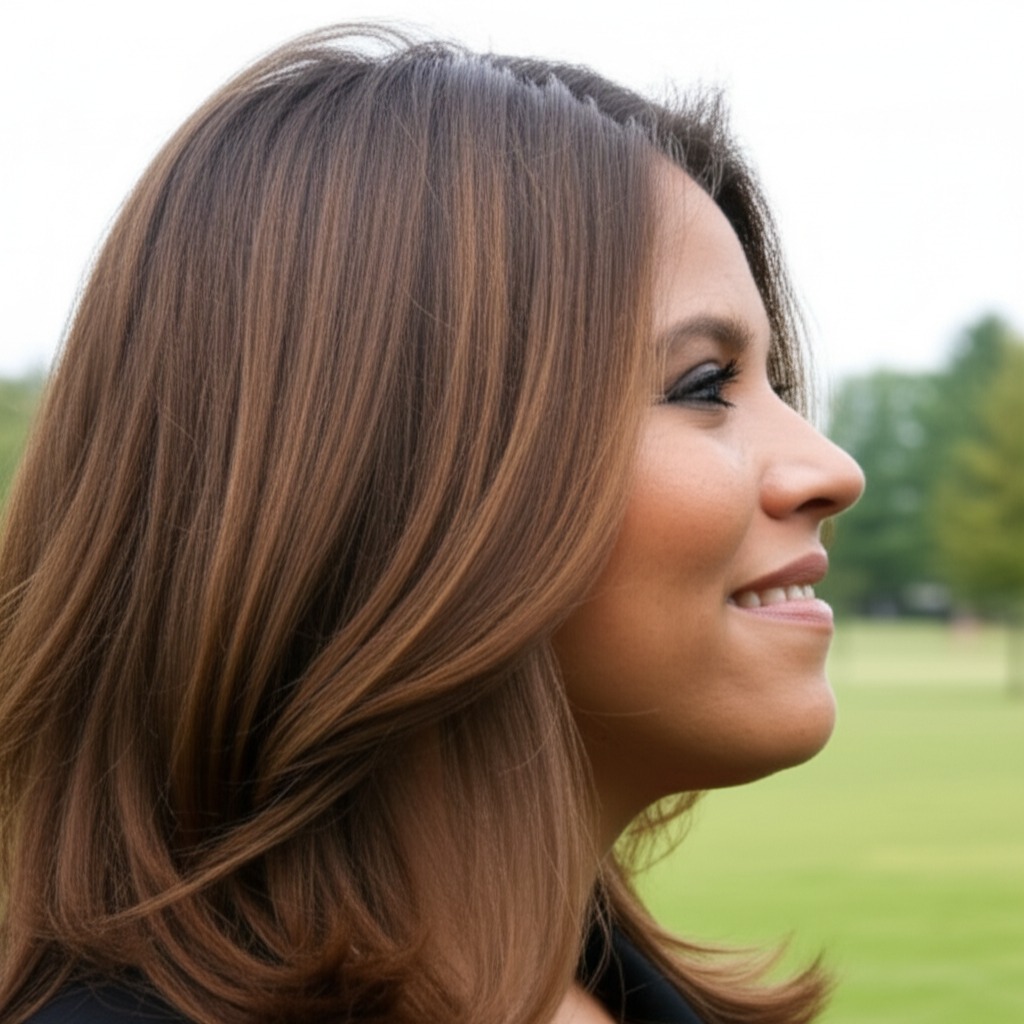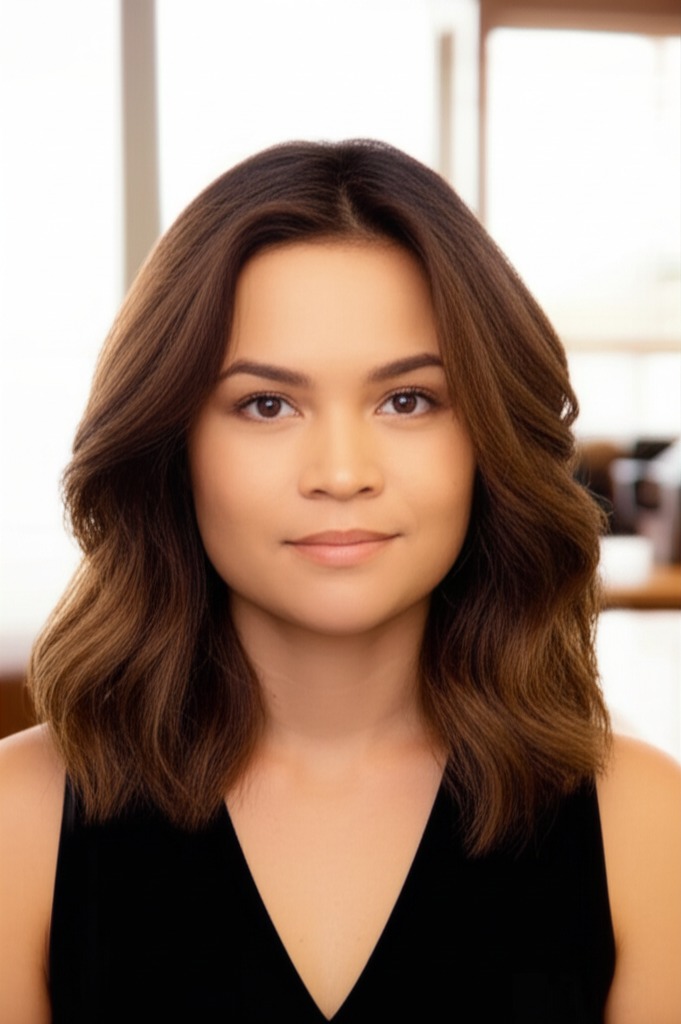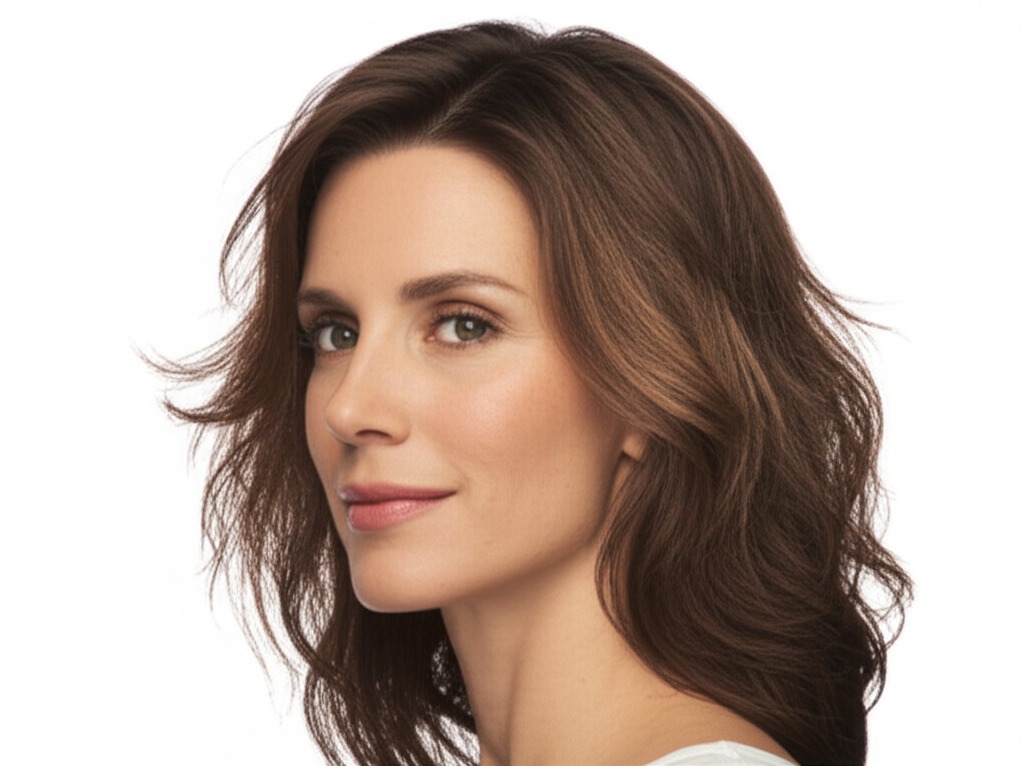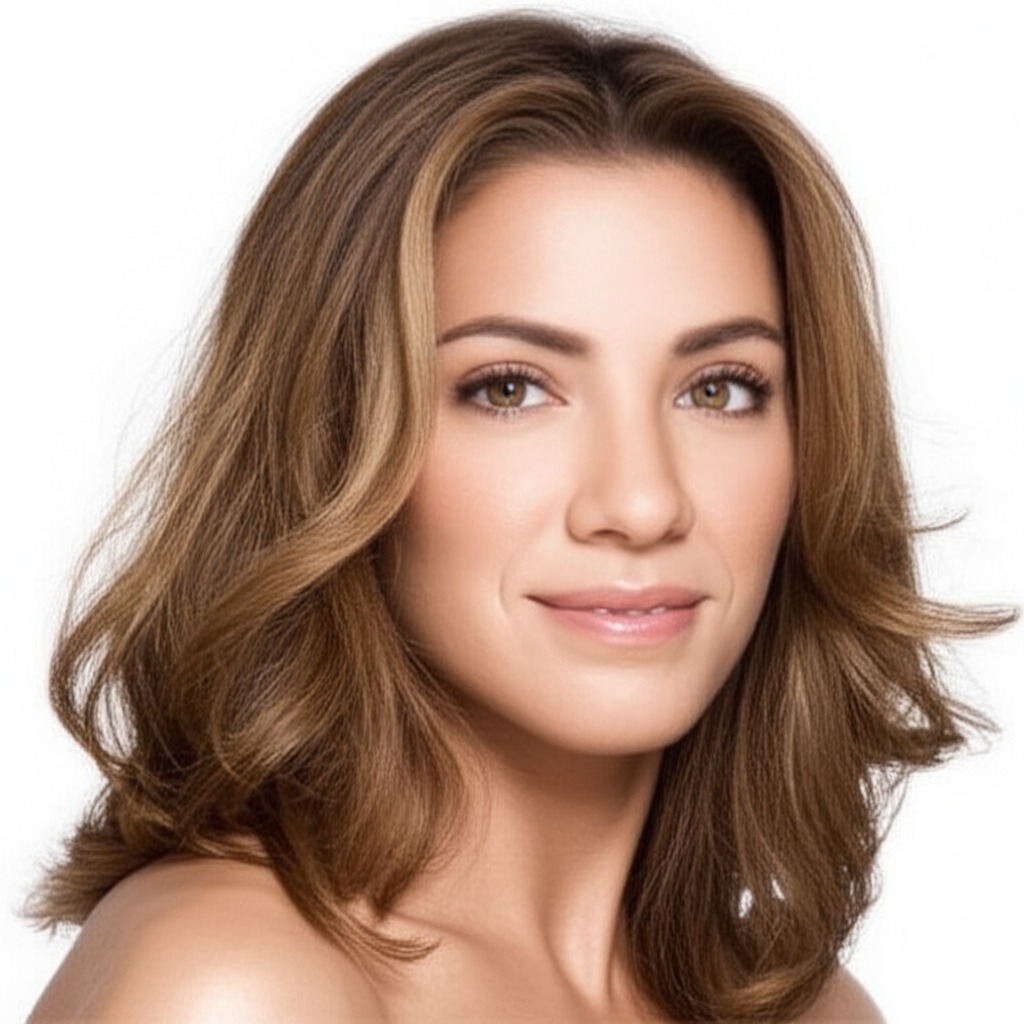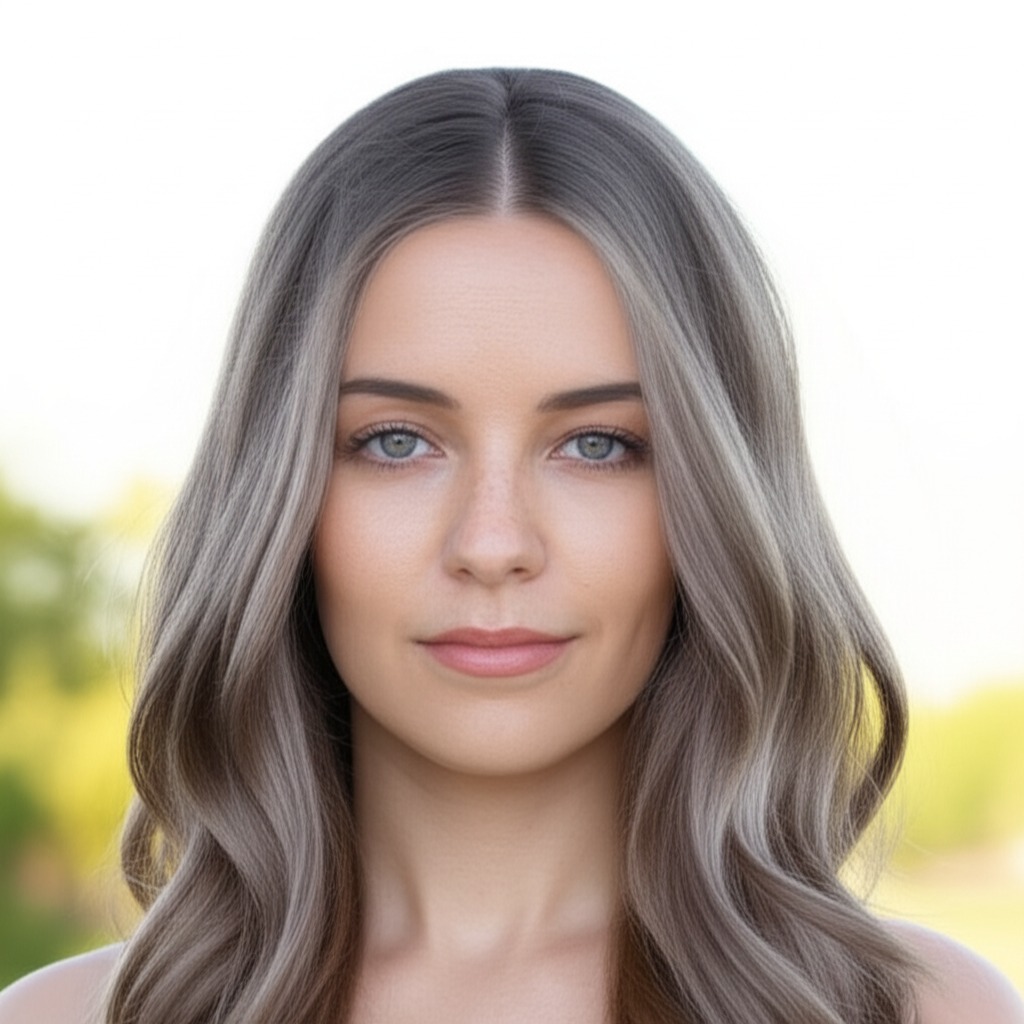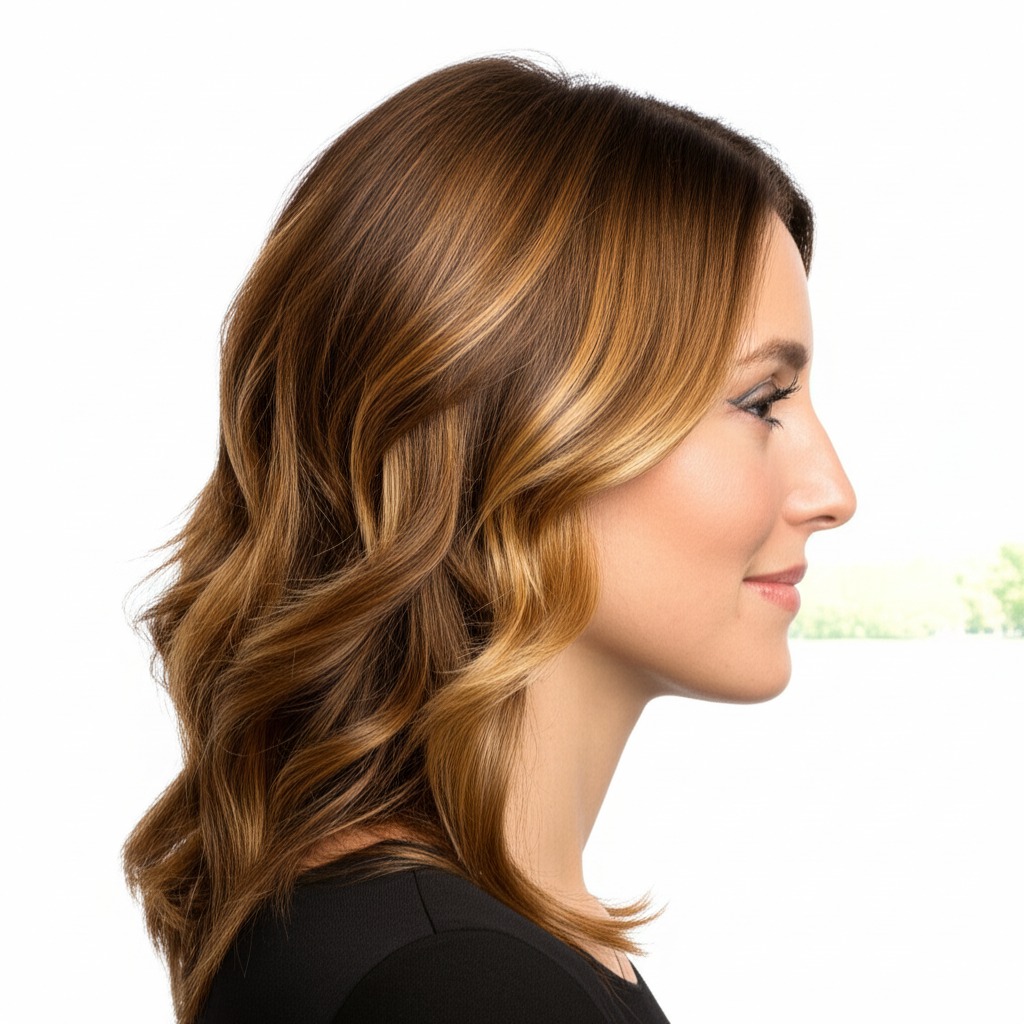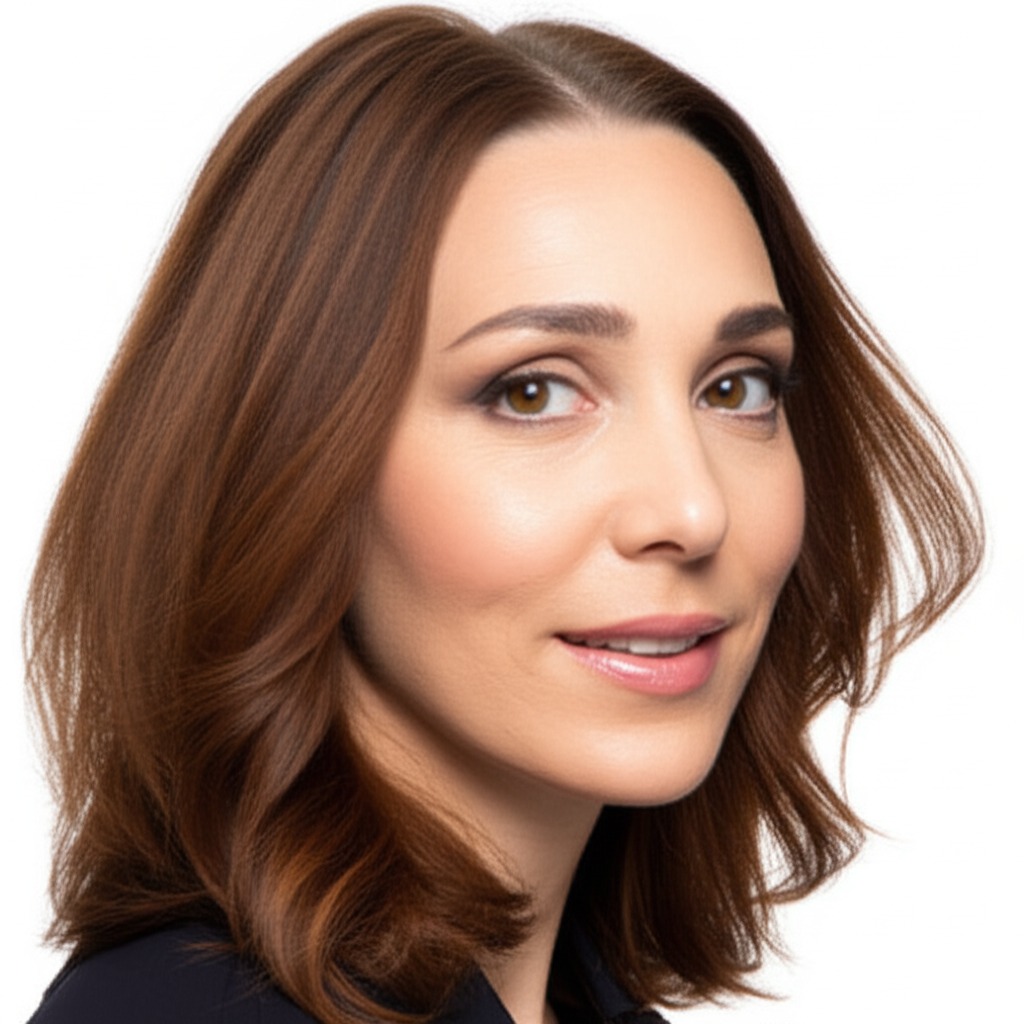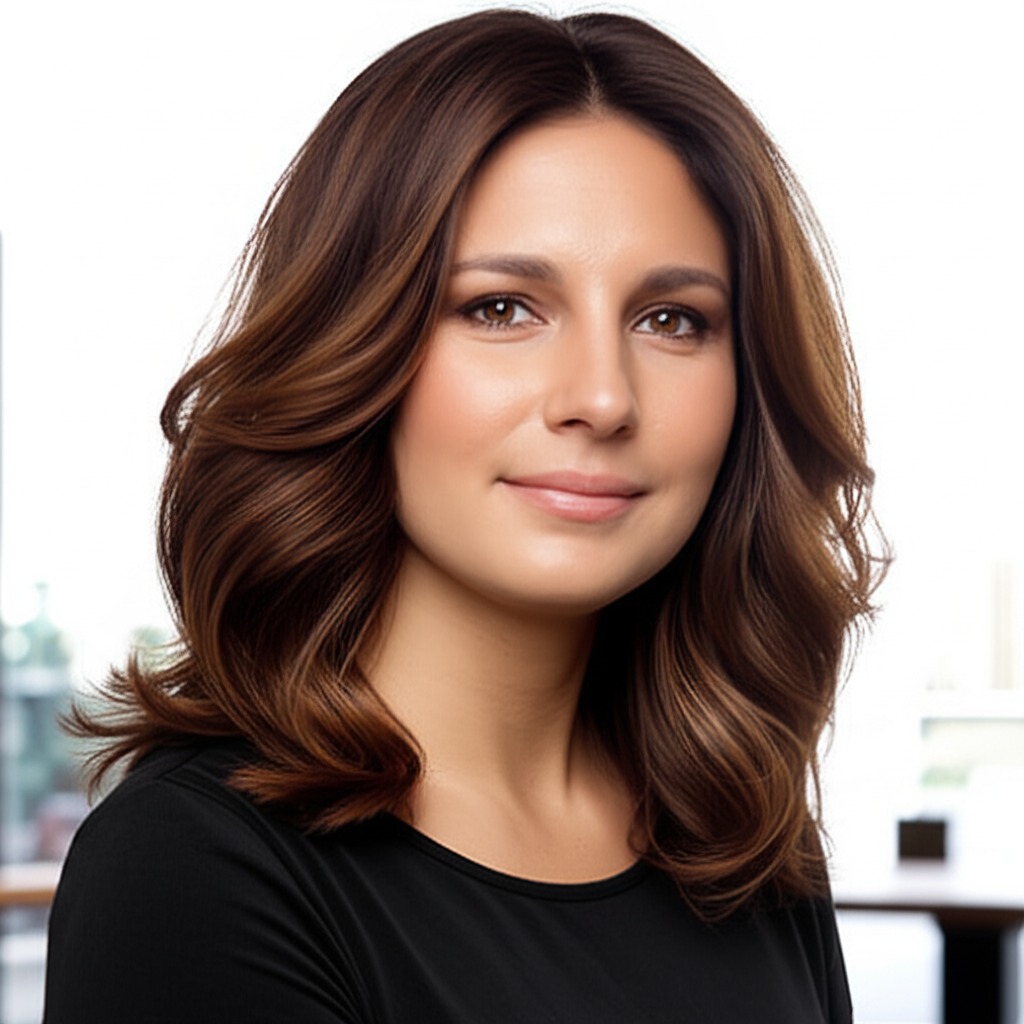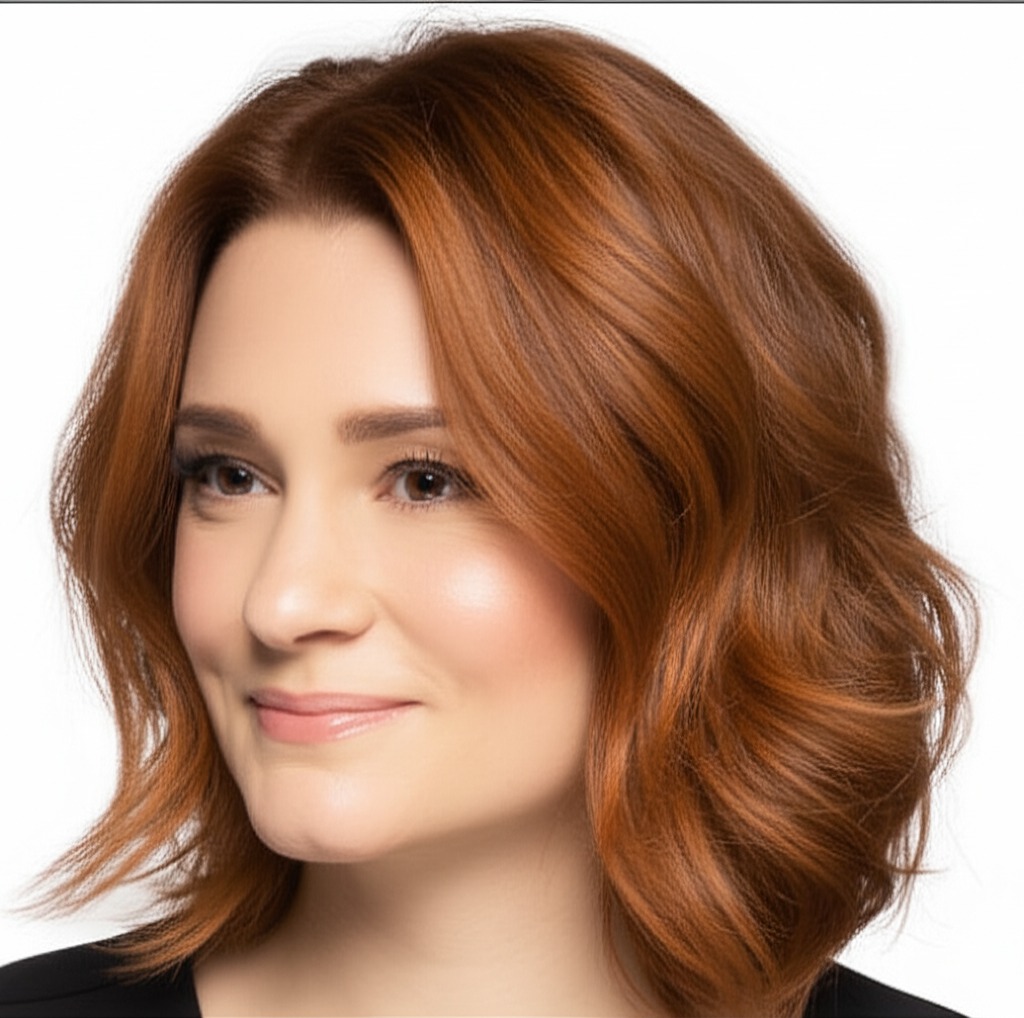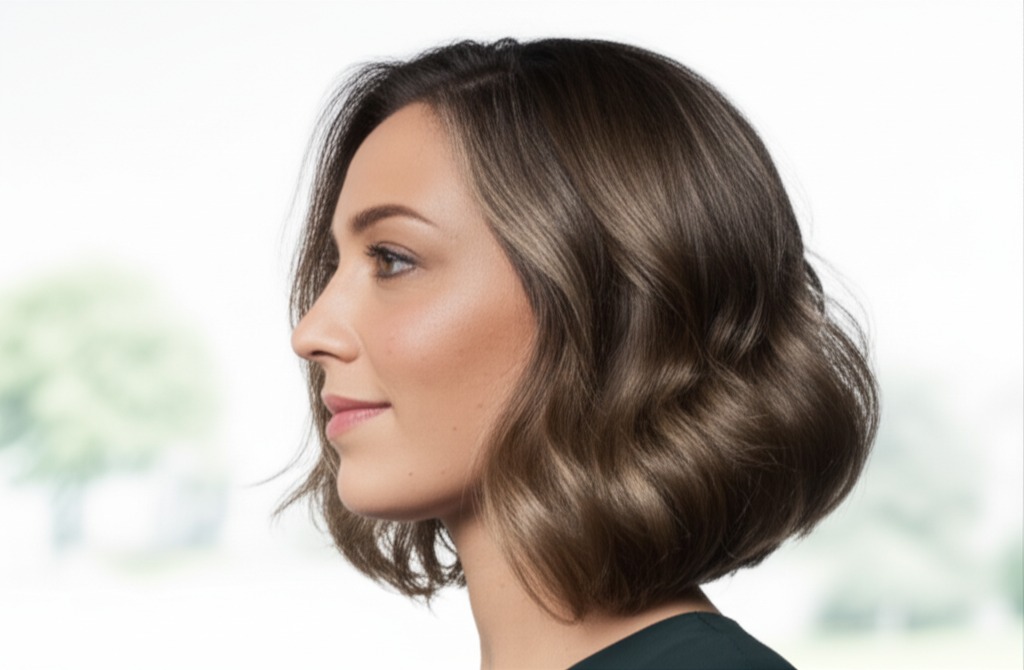#Mastering Medium Brown Hair Color
Medium brown is a universally flattering hair color – it's approachable, versatile, and can be customized to suit almost anyone! But “medium brown” isn’t just one shade. Let’s dive into everything you need to know about achieving and maintaining this beautiful hue.
#1. Defining Medium Brown: Shades & Depth
Think of medium brown as a family of colors rather than a single, fixed tone. The key elements are undertone and depth (level).
Undertones:
- Cool-toned medium browns: These have hints of ash or violet – they appear more muted and sometimes slightly greyish. They're often described as "chocolate brown" with a cool edge.
- Neutral-toned medium browns: A balanced mix, these don’t lean strongly warm or cool. They are the most versatile option for many skin tones. Think of classic, rich chocolate.
- Warm-toned medium browns: These have golden, caramel, or reddish undertones – they appear brighter and more vibrant. Sometimes called “golden brown” or "caramel brown."
Depth (Levels): Hair color levels range from 1 (black) to 10 (lightest blonde). Medium brown typically falls between levels 4-7. Level 4 is a darker, richer medium brown, while Level 7 is lighter and brighter. The difference in just one level can be significant!
#2. Who Does Medium Brown Flatter?
Medium brown's adaptability makes it surprisingly inclusive. Here’s a breakdown:
- Skin Tone & Undertone:
- Warm Skin Tones (yellow/golden undertones): Warm-toned medium browns will enhance your natural glow. Think caramel or golden chocolate.
- Cool Skin Tones (pink/blue undertones): Cool-toned medium browns complement cool skin beautifully, creating a harmonious look. Ash brown or dark chocolate is often ideal.
- Neutral Skin Tones: Lucky you! You can likely pull off any shade of medium brown – experiment to find your perfect match!
- Eye Colors: Medium brown looks stunning with almost every eye color:
- Brown eyes: Deepens and enhances their richness.
- Blue/Green Eyes: Creates a beautiful contrast, making them appear brighter.
- Hazel Eyes: Highlights the different flecks of color within hazel eyes.
- Natural Starting Point: Medium brown is often achievable with minimal correction from natural levels 5-7. Those starting with darker hair (levels 3-4) may need more sessions to reach the desired lightness and tone, especially if aiming for a lighter medium brown shade.
#3. Technique Options: From Subtle to Statement
How you apply the color is just as important as the shade itself!
- Single Process: A uniform application of color from root to tip – best for covering grays or achieving an even tone change.
- Highlights/Lowlights: Add dimension and depth. Highlights brighten, while lowlights add contrast. Great for adding subtle movement.
- Babylights: Very fine highlights that mimic the natural lightness of children's hair - a soft, blended effect.
- Gloss/Toner: A semi-permanent color used to adjust tone (cool it down, warm it up) or add shine. Essential for maintaining your medium brown shade!
- Balayage-Effect vs Solid: Balayage creates a hand-painted, natural look with softer roots and gradual transitions. A solid application offers more uniform coverage.
#4. Maintenance & Longevity: The Real Talk
Let's be realistic about upkeep.
- Wash Frequency: Aim for 2-3 washes per week to prevent color fading.
- Toner Refresh: Cool tones fade fastest! Plan for a toner refresh every 6-8 weeks, or sooner if you notice brassiness (more on that later). Warm tones can often go longer between touch-ups (8-12 weeks).
- Root Growth Pacing: Discuss with your stylist how quickly you want to blend in new growth. Balayage allows for more gradual blending than a solid color.
- Budget/Time Planning: Medium brown is generally considered moderately high maintenance, especially if highlights or toners are involved. Expect salon visits every 6-12 weeks and budget accordingly (typically $100-$350+ per visit).
#5. Seasonality & Pairing with Cuts: Adapting Your Look
Medium brown is incredibly adaptable to different styles!
- Cuts:
- Bob/Lob: Highlights or balayage can add movement and dimension.
- Long Layers: Medium brown looks gorgeous with long layers, creating a soft, flowing effect.
- Pixie Cut: A rich medium brown can make a pixie cut look sophisticated and stylish.
- Seasonal Tweaks:
- Fall/Winter: Richer, warmer tones (caramel or golden brown) complement the cozy season.
- Spring/Summer: Lighter, brighter shades with subtle highlights create a sun-kissed effect.
- Event Occasions:
- Work: A classic, neutral medium brown is professional and polished.
- Daytime: A balayage or babylights can add brightness to your look.
- Evening: Richer, warmer tones create a glamorous feel.
- Weddings: Consider adding subtle highlights for extra sparkle!
#6. At-Home Care: Protecting Your Investment
Treating your hair right is key to maintaining color vibrancy and health.
- Sulfate-Free vs Clarifying Cadence: Sulfate-free shampoos are gentler on colored hair, preventing fading. However, clarifying shampoos (used sparingly – once a month or less) can remove buildup.
- Heat Protection: Always use heat protectant before styling with hot tools!
- Color-Safe Styling Tips: Avoid harsh chemicals and excessive sun exposure. Rinse hair with cool water to seal the cuticle.
- Product Checklist: Sulfate-free shampoo, color-safe conditioner, deep conditioning mask (weekly), heat protectant spray, leave-in conditioner.
#7. Common Pitfalls & How to Avoid Them
- Brassiness: Warm tones can oxidize and become brassy over time. Use a purple shampoo or toner regularly to neutralize yellow/orange undertones.
- Banding: Uneven color application (often from at-home kits) creates noticeable lines of demarcation. Professional application minimizes this risk.
- Patchiness: Can occur with DIY jobs if the color isn’t applied evenly. Consult a stylist for best results, especially when making significant changes.
#8. Pros & Cons: Weighing Your Options
- Pros: Universally flattering, versatile, relatively low-commitment compared to drastic changes (like blonde), enhances natural beauty.
- Cons: Requires regular maintenance (toner touch-ups), color can fade over time, potential for brassiness if not properly cared for.
#9. Salon Consultation Script: Setting Expectations
Prepare for your appointment! Here are some questions/prompts to guide the conversation with your stylist:
- "I'm interested in a medium brown hair color. Can you help me determine which undertone would best suit my skin?"
- “What level of medium brown do you think is right for me, considering my natural hair color?”
- “I want to achieve a [balayage/solid/highlighted] look. Can we discuss the pros and cons of each technique for my hair type?”
- "How often will I need to come in for toner touch-ups?"
- “What at-home products do you recommend to maintain the color’s vibrancy and health?”
- “Could you show me examples of medium brown shades that would complement my features?”
#10. FAQs: Your Burning Questions Answered
- Can I achieve medium brown from black hair? Yes, but it will likely require multiple sessions to lift the color gradually and minimize damage.
- Is medium brown a good choice for gray coverage? Absolutely! A rich medium brown can effectively blend grays while looking natural.
- Will medium brown make my face look darker? It depends on the undertone. Cool-toned browns can sometimes appear slightly darkening, so warm tones are often preferred for brightening complexions.
- How long does a single process medium brown take? Typically 1.5 - 3 hours, depending on hair length and thickness.
- Can I tone my hair at home between salon visits? Yes, but proceed with caution! Follow product instructions carefully to avoid unwanted results. A color-depositing conditioner is a gentler option than a traditional toner.
- Does medium brown work well for fine hair? Absolutely! Medium brown can add the illusion of density and volume. Highlights or balayage can further enhance this effect.
By understanding these nuances, you’ll be one step closer to achieving your dream medium brown hair color – a beautiful, versatile shade that enhances your natural beauty!
